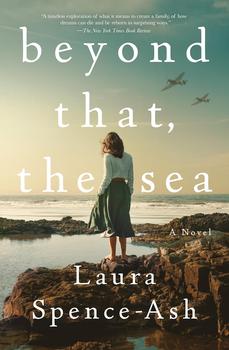Summary | Excerpt | Reading Guide | Reviews | Beyond the Book | Read-Alikes | Genres & Themes | Author Bio

A Novel
by Laura Spence-AshThis article relates to Beyond That, the Sea
.jpg) During World War II, the constant threat of German bombs falling on London and other key cities forced many English families to make an incredibly painful choice: whether to keep their children with them in this dangerous area or to separate from them, sending them away to places where they could hopefully live more safely and normally. Known as Operation Pied Piper, the evacuation of people from the cities, mostly children, started in September of 1939 and is estimated to have involved the relocation of almost 3.75 million residents. Many of the most famous portrayals of evacuees being relocated remain within England. In Crooked Heart, for example, Noel Bostock is sent to a suburb of London for his safety. Similarly, in perhaps the most famous literary example, the Penvensie siblings of The Chronicles of Narnia go to a professor's countryside home. In Laura Spence-Ash's debut novel, Beyond That, the Sea, however, Beatrix Thompson travels for two weeks by steamship to Massachusetts to live with an American family.
During World War II, the constant threat of German bombs falling on London and other key cities forced many English families to make an incredibly painful choice: whether to keep their children with them in this dangerous area or to separate from them, sending them away to places where they could hopefully live more safely and normally. Known as Operation Pied Piper, the evacuation of people from the cities, mostly children, started in September of 1939 and is estimated to have involved the relocation of almost 3.75 million residents. Many of the most famous portrayals of evacuees being relocated remain within England. In Crooked Heart, for example, Noel Bostock is sent to a suburb of London for his safety. Similarly, in perhaps the most famous literary example, the Penvensie siblings of The Chronicles of Narnia go to a professor's countryside home. In Laura Spence-Ash's debut novel, Beyond That, the Sea, however, Beatrix Thompson travels for two weeks by steamship to Massachusetts to live with an American family.
Locations further afield where evacuees were sent included not only the United States but also Australia, Canada, New Zealand and South Africa. Some evacuees were transported by private organizations and some by the CORB (Children of the Overseas Reception Board) Scheme, a government-sponsored initiative that was started in June of 1940.
In Beatrix's case, she and her parents know the identities of her host family, as well as a little bit about them, before she arrives. This is a departure from the experience of many real-life child evacuees, who would often come to their new homes without a family assigned to them, lining up on a stage or against a wall and waiting for volunteers from an audience to select them. Beyond the knowledge that she has a family waiting for her giving Beatrix comfort on the frightening steamship trip, she is also lucky in that her hosts truly care for her and bring her into the family fold. Experiences different from hers are acknowledged, as her parents back in London reflect on the horror stories they hear from other people whose children have been evacuated — that their children are not being sent to school, that they do not have any privacy or enough room, or that they are being abused. Even being aware of the risk of situations like these, many parents still felt that they had to evacuate their children from London and the greater danger there.
However, while the purpose of sending children away was to ensure their safety, the journeys to their destinations could themselves be perilous. On September 17, 1940, the SS City of Benares, carrying 90 evacuated children, was hit by a German torpedo and sunk 600 miles away from its planned landing place in Canada. Of the young evacuees, 70 died in the tragedy. This led to the cancellation of overseas evacuation.
Many evacuees and those involved with helping them get to safety have recorded their memories for posterity. You can learn about some of their stories in the video below from the Imperial War Museums.
Children's Overseas Reception Board (CORB) group bound for New Zealand
Source: The National Archives (UK), via Wikimedia Commons
Filed under People, Eras & Events
![]() This "beyond the book article" relates to Beyond That, the Sea. It originally ran in April 2023 and has been updated for the
May 2024 paperback edition.
Go to magazine.
This "beyond the book article" relates to Beyond That, the Sea. It originally ran in April 2023 and has been updated for the
May 2024 paperback edition.
Go to magazine.
Your guide toexceptional books
BookBrowse seeks out and recommends the best in contemporary fiction and nonfiction—books that not only engage and entertain but also deepen our understanding of ourselves and the world around us.